These two loaves are made with John Letts 85% stoneground flour (85% extraction), a mixed variety of Heritage wheat. John doesn’t know exactly how many varieties there are in this mix but he thinks something in the region of hundred and fifty. These wheat kernels are special, they’re from varieties you can no longer buy, some dating back hundreds of years to Medieval times, some younger but all non-hybrid. What makes these kernels different to modern varieties other than age is their ability to grow without any need for fertilisers or manure, just as with Roland’s varieties they have extra long roots collecting all their nutrients deep within the soil, making them adaptable to the unpredictable British climate.
I will write a post about John but first I couldn’t wait to write about this white flour and how amazing it feels to work with for a stoneground flour.
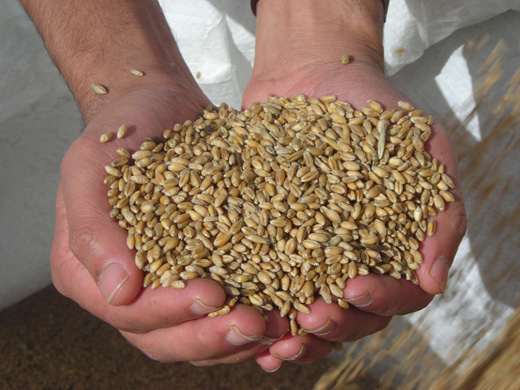
After making the first loaf I text John expressing my surprised on the strength of the flour, the dough feels as one mixed with roller white flour. On first folding it started to develop the gluten and by the second fold I had a tight ball in my hands.
Stoneground white flour is not the easiest of doughs because it has tiny particles from the bran and the germ mixed in, and depending on the quality of the wheat and/or the milling the dough can have short strands, the bran will cut into gluten as it develops its elasticity and the germ will also interfere with gluten development. This is the same problem with any wholemeal flour, stoneground or roller mill.
This mix from John has a lovely elasticity for a stoneground, it’s the sort of dough you could move from a roller mill flour and have to do very little adjustment to handle it. The only care being in the overall proving time, rich flours like this never withstand the same amount of proving as that of a roller white flour.

This dough has a powerful and most unusual aroma of any dough I’ve experienced, while proving in the same room I could smell a mix of roasted coffee and malt drifting over, a very strong complex fragrance. There is nothing added to this flour which means in this mix there are some forceful aromatic wheat varieties.

John had warned me about bakers adding too much water to his flour and then complaining of it spreading.
I soon realised it was absorbing water just fine, here in the loaf above and below I added 300g water to 500g flour, the round loaf I upped to 315g.

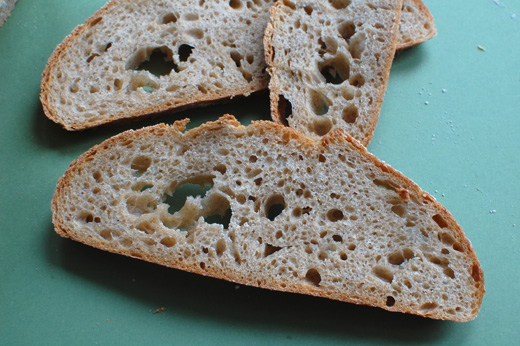
Once baked all that lovely malty aroma produces a sweet tasting crust. I’m so intrigued by the performance of this flour I can’t wait to push it further and keep on experimenting with it.




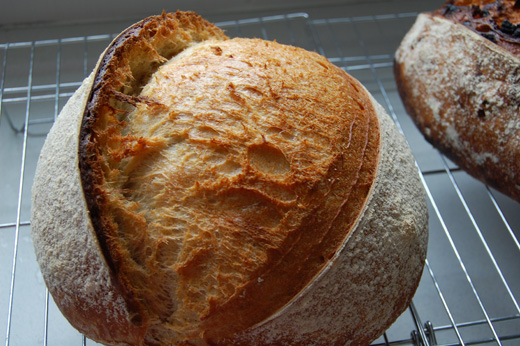
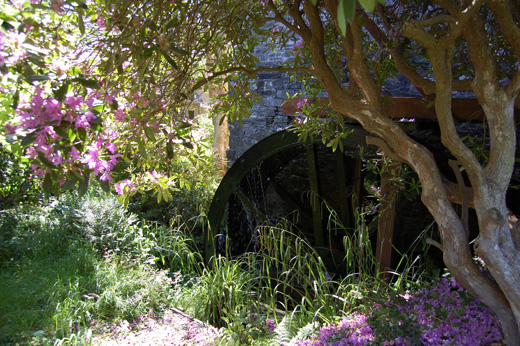
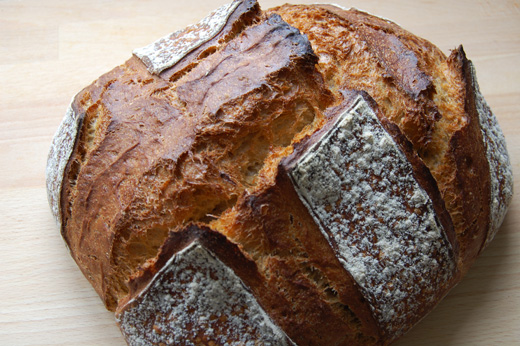



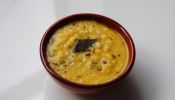


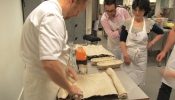














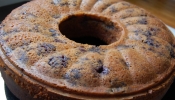


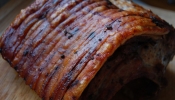

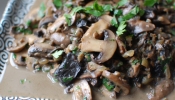

{ 7 comments… read them below or add one }
Your blog inspires me to look out for special flours more often! I got some lovely ones from Alford Mill last year, but it’s not that easy to find them round here.
Azelia, congratulations !
wonderful work.
but your doughs require more water than you put in.
try, you’ll see.
yes you can !
big hug
roland
Go forth and explore Sylvie!
hello my dear Roland! Yes I agree but first I need to get some more flour from John this afternoon! xx
hi azelia, i agree with roland, i have baked with john’s flour for a couple of years and find that although at 65% straight in the mixer/bowl it feels slack, but it does tighten up during first prove. I suggest a additional 3-5% via bassinage. you are right about it not standing a long prove, so i use the good ferment at 30-40% or 0.5% yeast.
breads look great.
i hope to build john’s in april. wanna come and join in?
hi Michael – I understand you used John’s flour from last year, milled by a different miller? This one is the new one, as you know different year different harvest and different milling all effect a flour’s performance. Have you got any pictures of those loaves? Would be interesting to see what you made with it.
Roland makes his bread a hybrid using 1.5% fresh yeast added, a stiff levain kept in the fridge, the dough is always kept very cold with only about 1.5hrs out of the fridge before it gets bake. It’s I think 80-85% hydration so his rise is through a combination of the young levain, added yeast and lots and lots of steam rise in the oven by the large amount of water in the dough and under-proved dough.
I might just come and see your handy work!
I also had pleasure of baking a loaf with John’s heritage wheat flour last week – at the Let’s Liberate Diversity (European small farmers/peasants and heritage seed alliance) forum held in Strathpeffer near Inverness. Oven etc kindly provided by local baker Gordon Gallacher – his micro style bakery has the greatest view from shaping table bar none!
Anyway, pic top left http://www.brockwell-bake.org.uk/gallery.php?page=2&project=82 I noticed basically the same as Azélia – great flavour. Some people preferred our BBA flour loaf (from modern Magister wheat) but not me. However have to admit that due to fineness/softness of flour dry, advice of John (to do less than 40% hydration), being in a bakery new to me and probably most of all the prospect of having bread tasted by the “boulangier paysanne” (baker/miller/farmer) par excellence Jean-François Berthelot from Réseau Semences-Paysannes, I copted out and added 20% Marriages Strong White to the main flour. With this I started with 60% hydration (including starter flour/water) but added at least another 10% and certainly could have gone further – I am certain not all due to the strong flour addition. I have brought home to London a bag and will try neat soon.
For anybody north of border, I managed to visit the only Scottish mainland stone grinding mill. Golspie Mill in Sutherland after the conference. Having also baked with their 98% extraction wholemeal at Strapthpeffer (again with 20% strong white addition) I found the explanation for its distinctive full flavour and very wide range of particle size in their unique (for British Isles) double pass milling method, once through rough dressed French Burrs to create a meal and then through Orkney grit stones to finish, followed by a sieving that removes only the most enormous pieces of bran. http://www.brockwell-bake.org.uk/gallery.php?project=83 I would recommend trying their flour to all who can get access to it and a visit (by arrangement) if going this far north.
yours
Andy